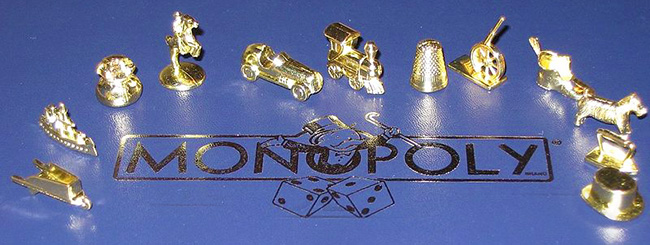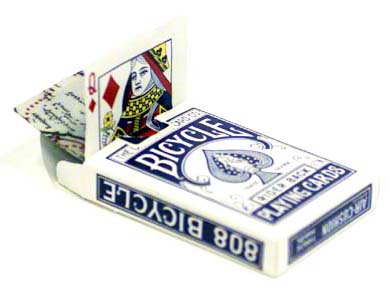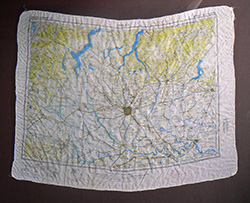Snopes, Monopoly, and POWs
Today, Monopoly games and mythology. The University of Houston's College of Engineering presents this series about the machines that make our civilization run and about the people whose ingenuity created them.

An article on the Internet tells a heroic WW-II story. You've probably seen it. It's about Monopoly games sent to Allied Airmen in German prison camps by the Red Cross and other agencies. Hidden in those games were silken maps, tiny compasses, local currency, and safe house locations. A third of the prisoners who escaped did so with the help of those Monopoly game tools. All this was kept secret until 2007.
My wife read this and wondered aloud if it all didn't seem too good to be true. And I remembered another such story that's made the rounds of the Internet for decades. It traces the spacing of railroad tracks back to the width of Roman horses' rear ends.
Both stories, it seems, have just enough truth to survive. For there appears to be a sort of falsehood limit - below which such fascinating items die out. Above that limit, they survive.
As for railway track widths, one can trace them back to horse-drawn mining trams. And their wheels were spaced much like those of Roman chariots. Early rail pioneer George Stephenson probably did first choose that width by looking at horse-drawn trams. But wait a minute: Beyond a certain width, turning gets clumsy. That's why wheel-spacings on trains, automobiles, carts, and chariots - all tend to be close to an optimal five feet.
And the Monopoly set story? It's mostly true, but likewise embellished: No one would've put safe house lists in items the Germans might intercept. Nor would they endanger the Red Cross by using it to smuggle escape tools. And the 1/3 figure? Way too high! Still: prisoners did use items in those games in some escape attempts - especially silken maps. And those maps didn't just come in Monopoly sets. They also came in decks of cards and in other ways. Finally, these special Monopoly sets were well-known long before any government declassification in 2007.

Another map delivery system: Silken maps were also secreted in decks of cards.
Most of us have used the Snopes.com website to check such claims. It's very helpful. And, it's the most fun when it tells us that a given story is actually true. That's pretty much the case with the Monopoly story. And it tells us much about the evolution of Myths. A myth is often a real event, told as we might wish it to have been! I suspect some truth likewise lurks behind Daedalus and Icarus, the Biblical Flood, and the Trojan Horse.
Rousseau said something you've heard me mention before: Speaking of myths, he said, "It is no light undertaking to ... know correctly a state which no longer exists, which perhaps never existed." But he adds, "about which it is nevertheless necessary to have precise notions [if we are] to judge our present state correctly."
So let's take the elaborated Monopoly game story seriously. As history, it is flawed. But, as a celebration of ingenuity and the human spirit in the face of adversity, the elaborated story enriches us. Our task is to anchor our feet solidly upon the ground; and, only then, embrace our myths and put them to use.
I'm John Lienhard at the University of Houston, where we're interested in the way inventive minds work.
See the Snopes.com articles on POW Escape Maps Hidden in Monopoly Games, and Railroad Gages and Roman Chariots.
For the Rousseau quote, see: L. Brisman, Romantic Origins (Ithaca: Cornell University Press, 1978), Introduction. I elaborate upon its use in: J. H. Lienhard, How Invention Begins: Echoes of Old Voices in the Rise of New Machines. (N.Y.: Oxford University Press, 2006), Chapt. 1.
See also the Wikipedia article "Escape and evasion map."

To view a typical silken escape route map, click on the icon above. This and the images above are all courtesy of Wikimedia Commons.
This episode was first aired on Feb. 28, 2014